Bagni di Lucca, English Cemetery
ITA | ENG
Commentary
For centuries, Bagni di Lucca has served as a gathering place for foreigners drawn to its scenic beauty and thermal treasures. Throughout the 19th century, it hosted a substantial English community that spent extended period in the Lima Valley, from spring to autumn, far beyond the typical summer holiday season. As early as 1818, when Percy and Mary Shelly stayed at Casa Bertini at Bagno alla Villa, the presence of English visitors was already significant. Mary herself lamented in her correspondence that English was the only language spoken in the area (Mary Shelley to Maria Gisborne, July 2, 1818). Historians estimate that, by 1834, Bagni di Lucca was home to as many as 10,000 foreigners, the majority of whom were English (Cherubini, 1972, p. 61). In order to provide religious support to fellow nationals, beginning in 1838, George Robbins, chaplain to the English community in Pisa, was appointed to reside in Bagni di Lucca during the summer months.
It comes as no surprise that such a such a substantial group of residents soon aspired to secure spaces dedicated to worship and burial. In July 1840, Reverend Robbins received authorization from Duke Carlo Ludovico of Bourbon to build a church (now the site of the municipal library), which was built in the Villa district according to a design by architect Giuseppe Pardini. The ducal concession stipulated a specific condition: “that no external sign [should] indicate that the building is a church or chapel” (Giambastiani, 1994, p. 20), which evidently intended to avoid offence to the local religious authorities, who strongly opposed the project. Consequently, an unassuming structure was erected, featuring classical architectural elements and “resembling a small Venetian palace, detached from other buildings and situated in a quiet location” (Tolomei, 2001, p. 188).
Only two years later, on July 23, 1842, the Duke received another petition, this time requesting the purchase of a plot of land to be designated as an Anglican cemetery. Once again authoization was granted on the condition that the site be secluded and remote, “considering that English cemeteries bear no distinguishing marks that might confuse them with our own, and present more the appearance of a garden than a place intended to receive the remains of the deceased such that the eye of the common people becomes accustomed to seeing in them a place for meditation and solitude rahten than an object of religious devotion” (Tolomei, 2001, p. 188). Indeed, a distinctive feature of the English Cemetery in Bagni di Lucca is its garden-like layout, with a central avenue lined with cypress trees leading to a Chapel for funeral ceremonies. On either side of the avenue, the lawn accomodates marble monuments arranged according to a plan originally characterized by strong symmetry.
A plot of land known as Prato Santo, located on the left bank of the Lima River, outside the inhabited area of the Villa, was selected to be the site of the cemetery. The parcel was transferred to the English Nation by Francesco and Valente Barsantini through a private agreement dated August 27, 1842. Merely two days after the signing of the sale contract, the first burial took place: that of Edward Newbery, a thirty-one-year-old Englishman and member of the East India Company residing at the Villa.
Among the most active promoters of the Anglican church and the cemetery were the Stisted couple, prominent figures within the Anglo-Saxon community of Bagni di Lucca. Henry, a former Dragoon captain who served under Nelson and participated in the Battle of Waterloo, and his wife, Elizabeth Clotilde, were instrumental in fundraising efforts. The cemetery was completed in June 1944 at a cost exceeding 7,000 scudi, and at the beginning of the following year, Elizabeth Stisted published Letters from the Bye-Ways of Italy (1845), the proceeds of which helped cover part of the outstanding debt.
The cemetery’s Rules and Tariff Schedule constitute a document of undeniable interest, as they witness the establishment of a formal organization for the burial of foreigners. The latter came not only from Bagni di Lucca and the Lima Valley, but also from other Tuscan and Italian cities. Beyond the evocative beauty of the site—often cited by local historians as a reason for its selection—it is more plausible that heirs chose the Bagni di Lucca cemetery due to the availability of a well-organised service, which, moreover, allowed them to avoid the costly repatriation of remains to their countries of origin.
In this place, which, in Elizabeth Stisted’s words, “a majestic mountain […] folds with extended arms” and where “the air is unbroken save by the gentle river murmuring at its base” (Stisted, 1845, p. 488), rest several notable figures. Aesthetically refined is the tomb of the writer Ouida (Louise de la Ramée, 1839-1908), author of widely popular novels during the 1860s to 1880s, who spent thirty years in Italy and died in poverty in Viareggio.
On the left side of the cemetery lawn stand the funerary crosses of three women who lived in Bagni di Lucca for many years, leaving a lasting mark on the history and popular imagination of the Lima Valley: Rose Cleveland (1846-1818), Evangeline Whipple (1857-1930), and Nelly Erichsen (1862-1918). Rose was the sister of President Grover Cleveland, and served as First Lady at the White House at the beginning of her brother’s first presidential term. She was romantically involved with the widow Evangeline Marrs Simpson, whom she met in the winter 1889-1890, and their relationship was rekindled after the death of Evangeline’s second husband, Reverend Whipple. The two lived together in Bagni di Lucca from 1910 to 1918; here, they purchased a villa and became deeply integrated in the local community, forming a close friendship with Nelly Erichsen, a renowned British illustrator of Danish origin who moved to Bagni in 1912. During the First World War, the three women dedicated themselves to assisting displaced families in Tuscany and opened a school for the orphans of fallen soldiers, which also welcomed local children. Nelly and Rose died in Bagni during the Spanish flu epidemic in 1918. In 1928, Evangeline published A Famous Corner of Tuscany, a volume dedicated to Bagni di Lucca and the Lima Valley, in memory of her companion. She died two years later in London but requested to be buried in the Tuscan village she had come to regard as her spiritual homeland.
Also buried in the Anglican Cemetery are the Stisted couple and Alexander Henry Halliday, an Irish entomologist who lived many years in Lucca and co-founded the Italian Entomological Society.
On the tomb of Charles Isidore Hemans (1829-1876), son of the Romantic poet Felicia Dorothea Hemans, are engraved some lines from one of his mother’s poems. The funerary monument of Benjamin Gibson, a member of the London Archaeological Association, was crafted by his brother, John Gibson, a famous neoclassical sculptor and a pupil of Antonio Canova. Heinrich Döhler (1778-1843), private secretary to Carlo Lodovico and language tutor to Ferdinando, heir to the throne of the Duchy of Lucca, was also buried in Bagni. He was the father of the celebrated pianist and composer Theodor Döhler, a friend and rival of Franz Liszt, who is mentioned by Elizabeth Stisted in her Italian Letters. Ernst Georg Frederich Gryzanowski (1824-1881), a medical doctor and member of the Association against animal vivisection, rests in a marble sarcophagus distinguished by its elaborate ornamentation and Masonic symbols, which are recurrent motifs on the cemetery’s monuments.
After a long period of neglect, restoration work on the Anglican Cemetery began in the early 2000s, starting with the chapel, which was restored in 2002. In 2012, management of the site was entrusted to the Michel de Montaigne Cultural Foundation and the Bagni di Lucca section of the Istituto Storico Lucchese. Subsequent restoration efforts included site clearance, rebuilding of the perimeter wall, and the planting of new cypress trees. Thanks to a fundraising campaign involving many private citizens, 89 monuments have been restored between 2012 and 2025. A dedicated section of the Michel de Montaigne Foundation’s website (https://www.fondazionemicheldemontaigne.it) provides detailed information on the English Cemetery and the restoration work undertaken.
Documents
Mary Shelley to Maria Gisborne, Thursday 2 July, 1818 (in The Letters of Mary Wollstonecraft Shelley, I, p. 74)
[in] Bagni […] I am sure you would be enchanted with every thing except the English that are crowded here to the almost entire exclusion (of) Italians; so that I think it would be easier to have a conversazione of Italians in England than here in their native country—We see none but English, we hear nothing but English spoken—The walks are filled with English Nurserymaids, a kind of aninal [animal] I by no means like, & dashing staring English-women, who surprise the Italians who always are carried about in Sedan Chairs, by riding on horseback.
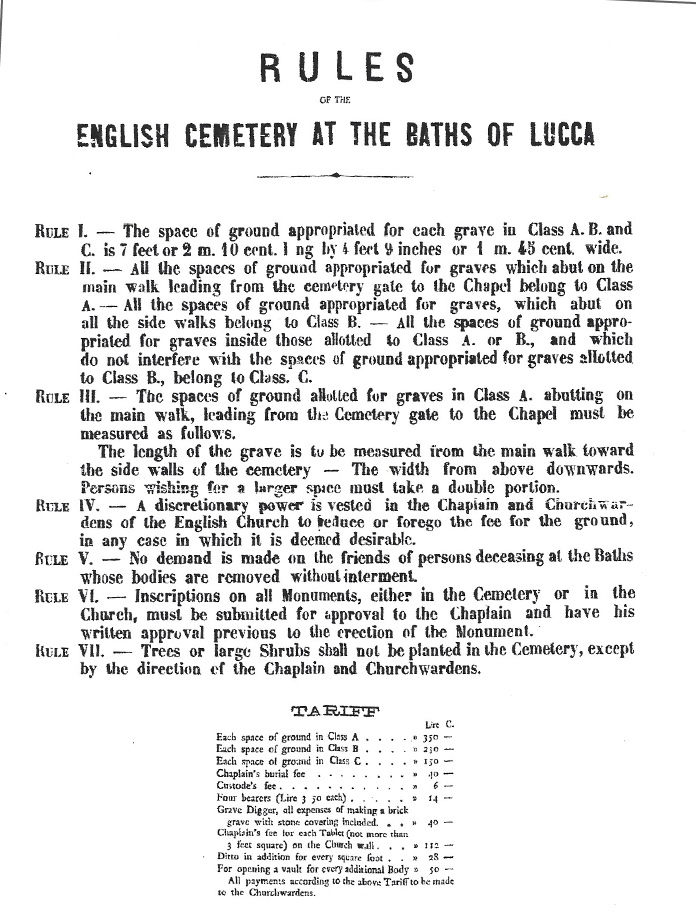
Elizabeth Clotilde Stisted, Letters from the Bye-Ways of Italy, London, Murray, 1845, pp. 487-488.
Our cemetery is just the spot which a heart-stricken mourner would select for the last earthly home of a cherished object. The sublime stillness of the air is unbroken save by the gentle river murmuring at its base while a majestic mountain, rising behind like a merciful and compassionate Providence, folds with extended arms, in its mantle of forest, the young and suppliant cemetery, sueing for shelter and protection at its feet. Even day's too garish eye is, in pity, veiled with verdure from the sacred inclosure. An avenue of cypresses conducts the funeral train by a gentle ascent to the little chapel where the last obsequies are performed. Time will improve the hallowed spot in beauty as in interest.
Elizabeth Clotilde Stisted, Letters from the Bye-Ways of Italy, London, Murray, 1845, pp. 487-488
We have just had a most interesting visit from Theodore Döhler; he returned only yesterday from Copenhagen, where he has been exercising his brilliant musical talents. I have mentioned our early acquaintance with this estimable young man in a former letter. His respectable father was one of the Prince of Lucca's preceptors, and of the Lutheran church. He died in May, and became the second tenant of the cemetery. His excellent son came to mourn over his grave, and commune with the friends to whom he thinks he is indebted for his parent's remains finding repose in this valley. […] After a melancholy visit to the cemetery, our young friend [Thomas Döhler] returned to pass the day with us; we found him looking old, for his years, but in character unchanged, and quite unspoiled by the world's adulation. He talked to us warmly of the kindness which greeted him every where, but his mind reverted again and again to his father's grave. He said he had brought from Paris, lithographs of all the tombs at Père la Chaise, to select a monument from. He then enquired how funds were raised for our chapel and cemetery and when I named the debt, and imparted to him what I was humbly attempting for its liquidation, "You must let me assist you,'' said he, “why should I not give a concert to aid an object which is now so interesting to me.'' The proposition was like himself, and we have accepted it.*
* The following month M. Döhler sent his fine Leipsic piano-forte, and gave a concert for the benefit of the cemetery, which produced a hundred crowns—concerts rarely succeed so well here.
From Felicia Dorothea Hemans, “The Graves of a Household”, The New Monthly Magazine, XIV, 1825.
And one—o'er her the myrtle showers
Its leaves, by soft winds fann'd,
He faded 'midst Italian flowers,
The last of that bright band.
Illustrations
The English Church of Bagni di Lucca
.png)
Mongolo1984, CC BY-SA 4.0 <https://creativecommons.org/licenses/by-sa/4.0>, via Wikimedia Commons
The front of the English Church
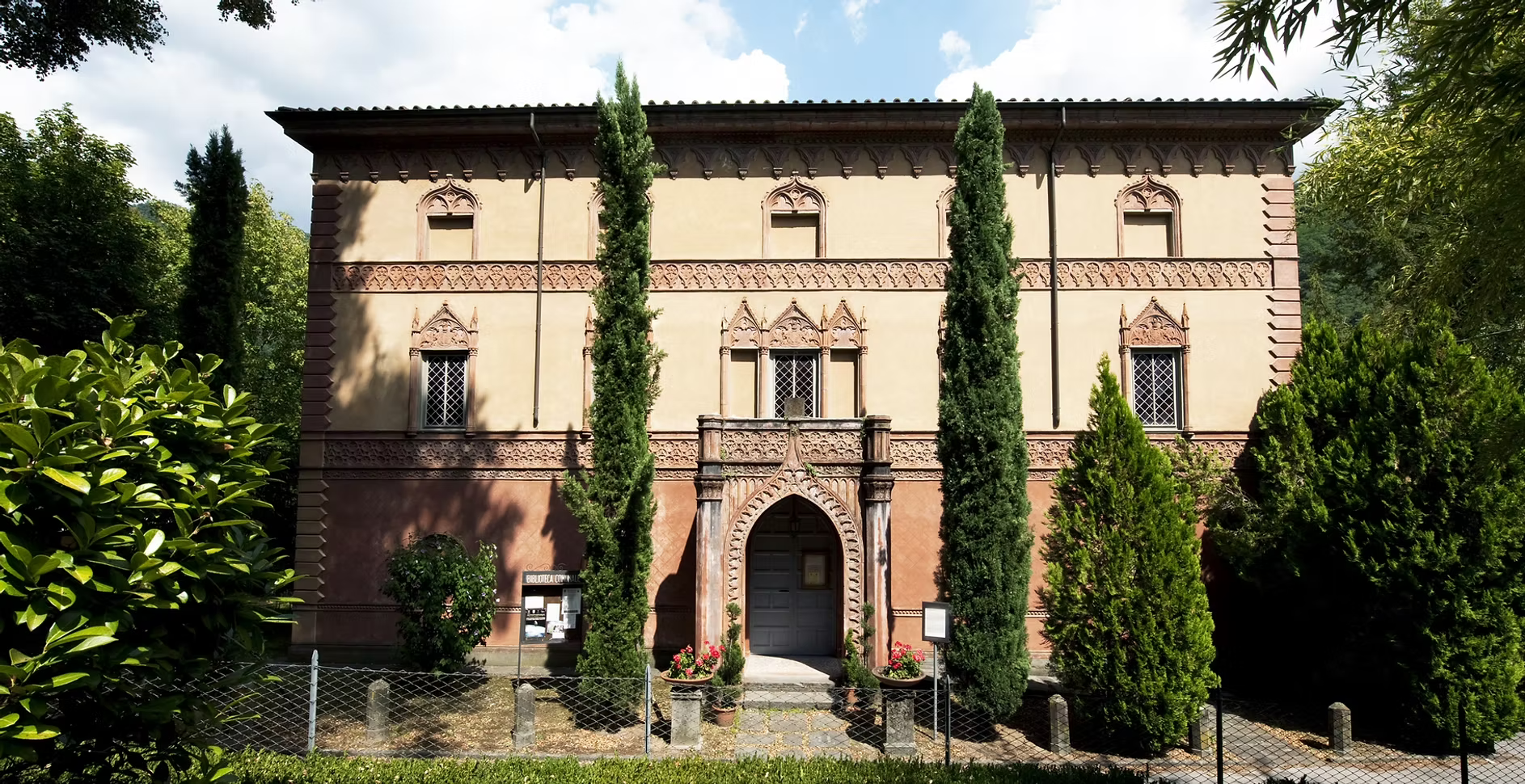
Fondazione Michel de Montaigne - Website https://www.fondazionemicheldemontaigne.it/
Municipal Library "Adolfo Betti"
.png)
Pietro Petrus, CC BY-SA 4.0 <https://creativecommons.org/licenses/by-sa/4.0>, via Wikimedia Commons
Original plan of the English Cemetery (1842)
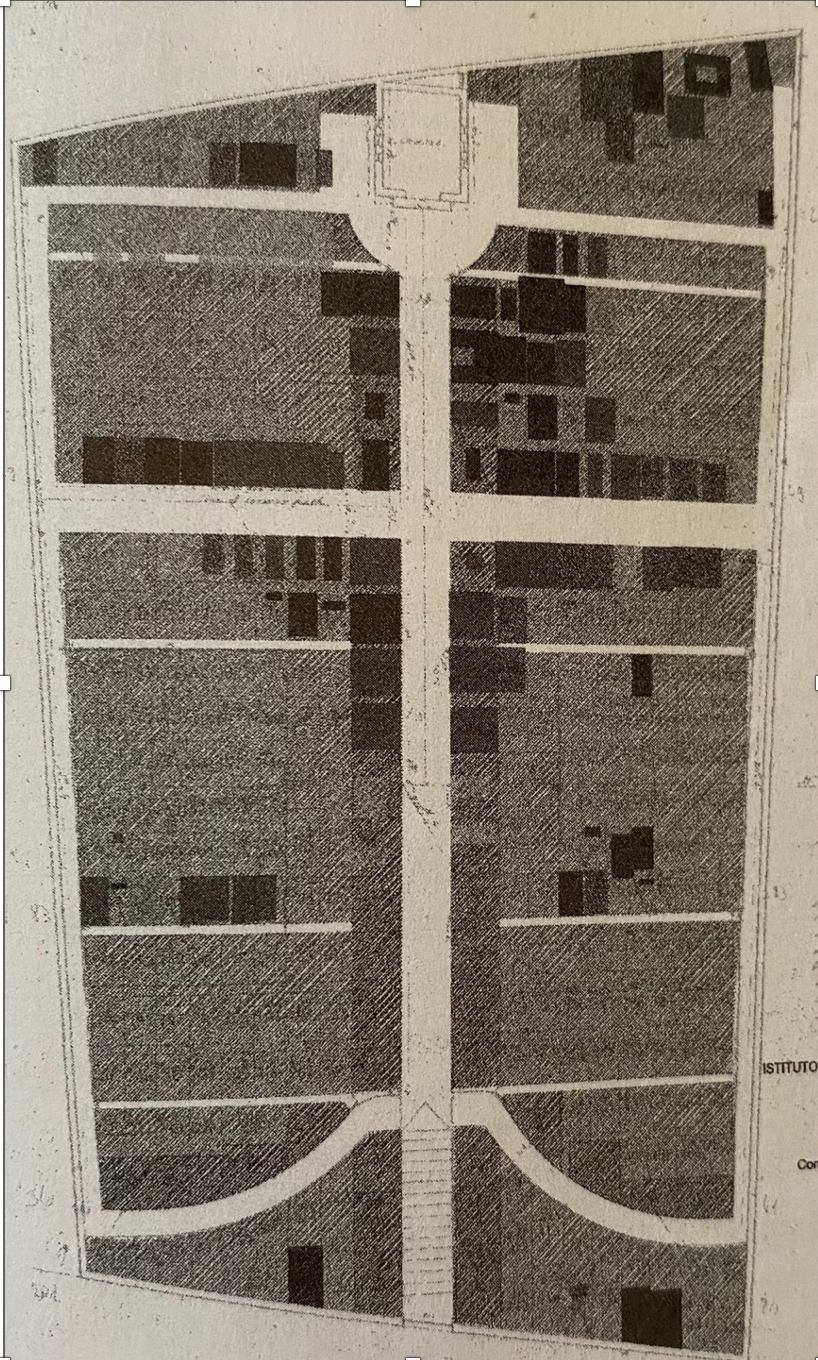
“The English Cemetery – Established at the Baths of Lucca August 1842”, Archivio storico del Comune di Bagni di Lucca. Arianna Tolomei e Ilaria Garibaldi, “Il restauro del Cimitero anglicano di Bagni di Lucca”, in L. Giambastiani (a c. di), Il cimitero anglicano ai Bagni di Lucca, 2003, p. 83.
The English Cemetery of Bagni di Lucca
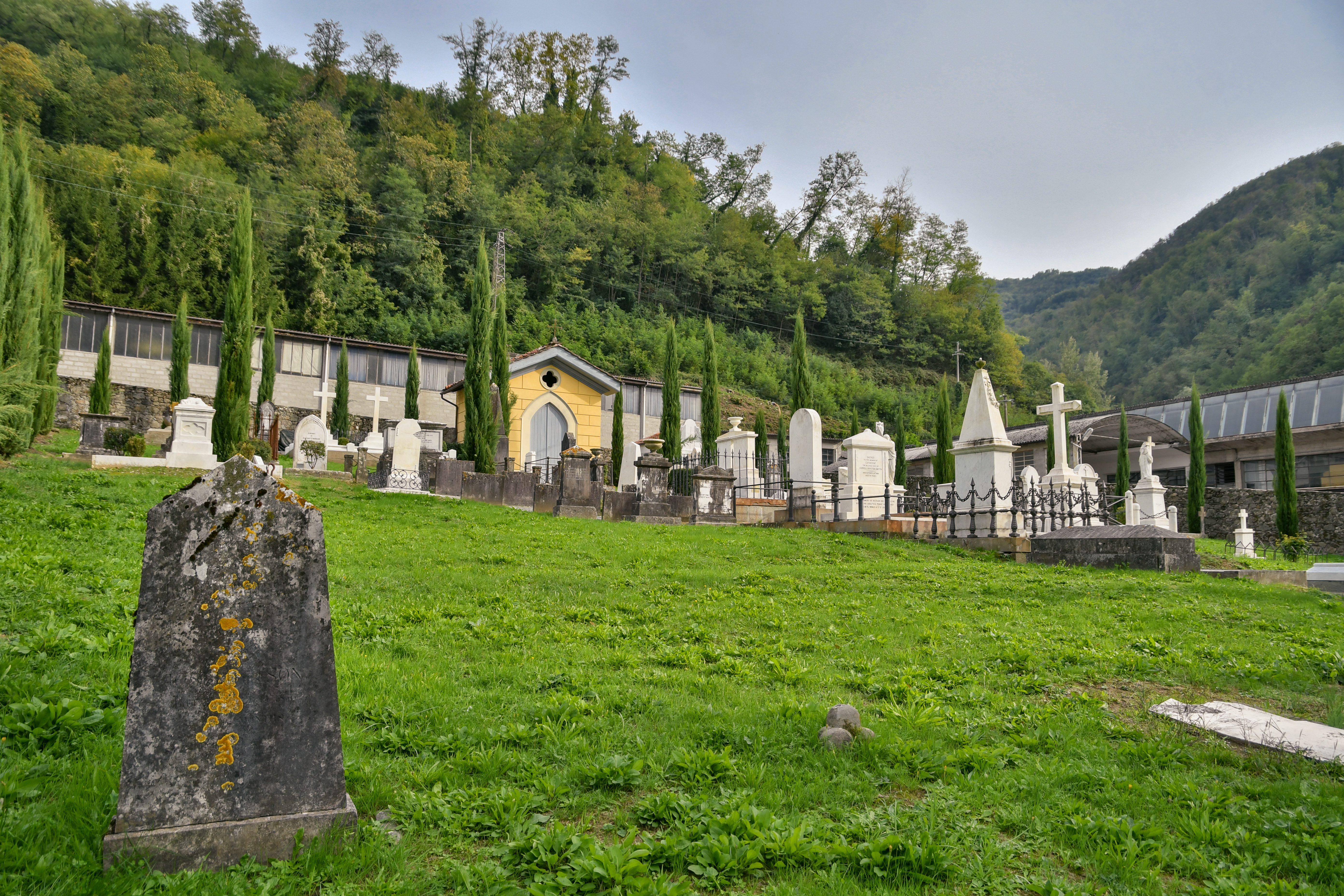
Foschifrancesco, CC BY-SA 4.0 <https://creativecommons.org/licenses/by-sa/4.0>, via Wikimedia Commons
The Chapel of the English Cemetery
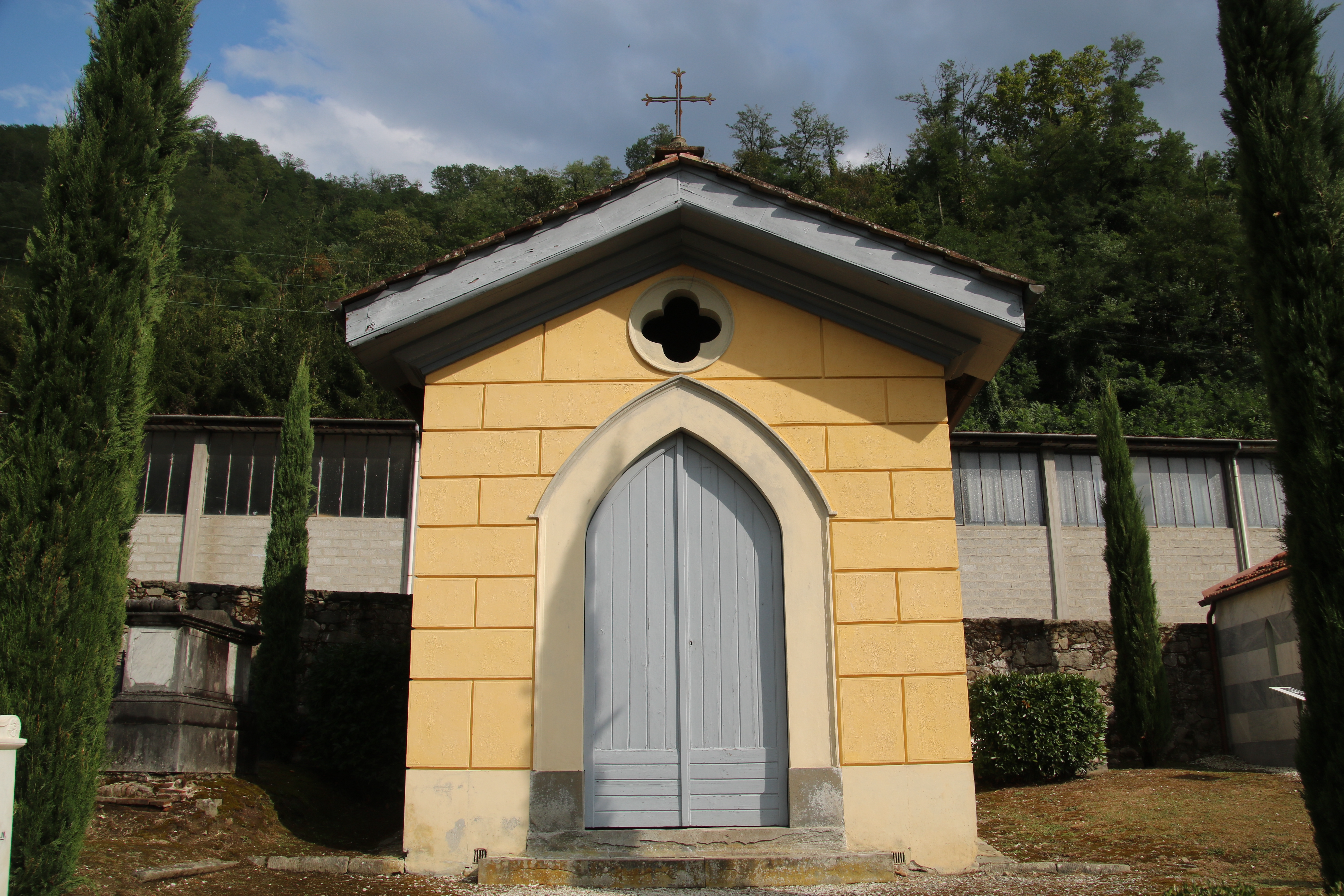
Mongolo1984, CC BY-SA 4.0 <https://creativecommons.org/licenses/by-sa/4.0>, via Wikimedia Commons
Ouida's funeral monument
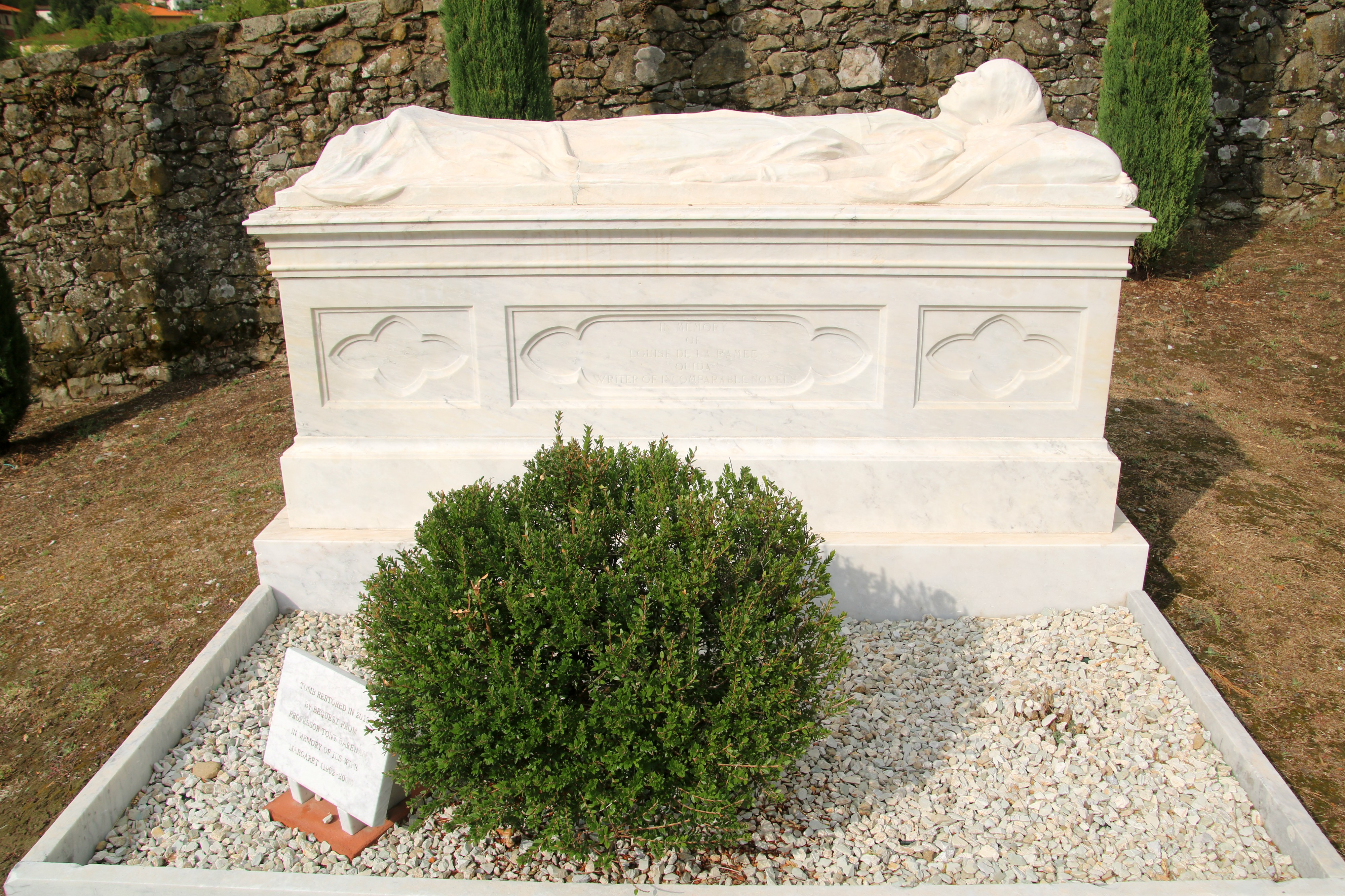
Mongolo1984, CC BY-SA 4.0 <https://creativecommons.org/licenses/by-sa/4.0>, via Wikimedia Commons
Tombs of Evangeline Whipple, Rose Cleveland, Nelly Erichsen
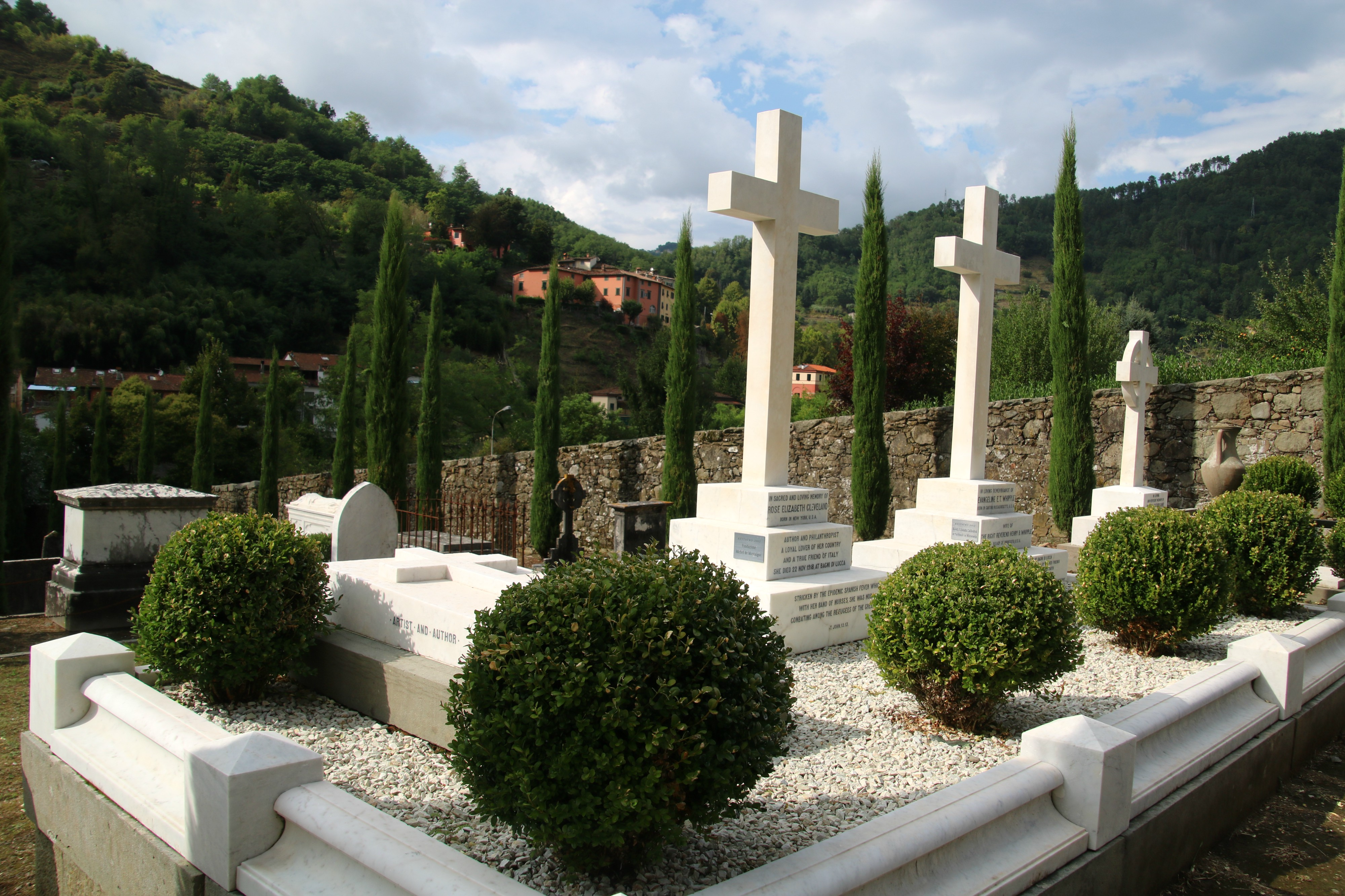
Mongolo1984, CC BY-SA 4.0 <https://creativecommons.org/licenses/by-sa/4.0>, via Wikimedia Commons
Tomb of Ernst Georg Frederich Gryzanowski
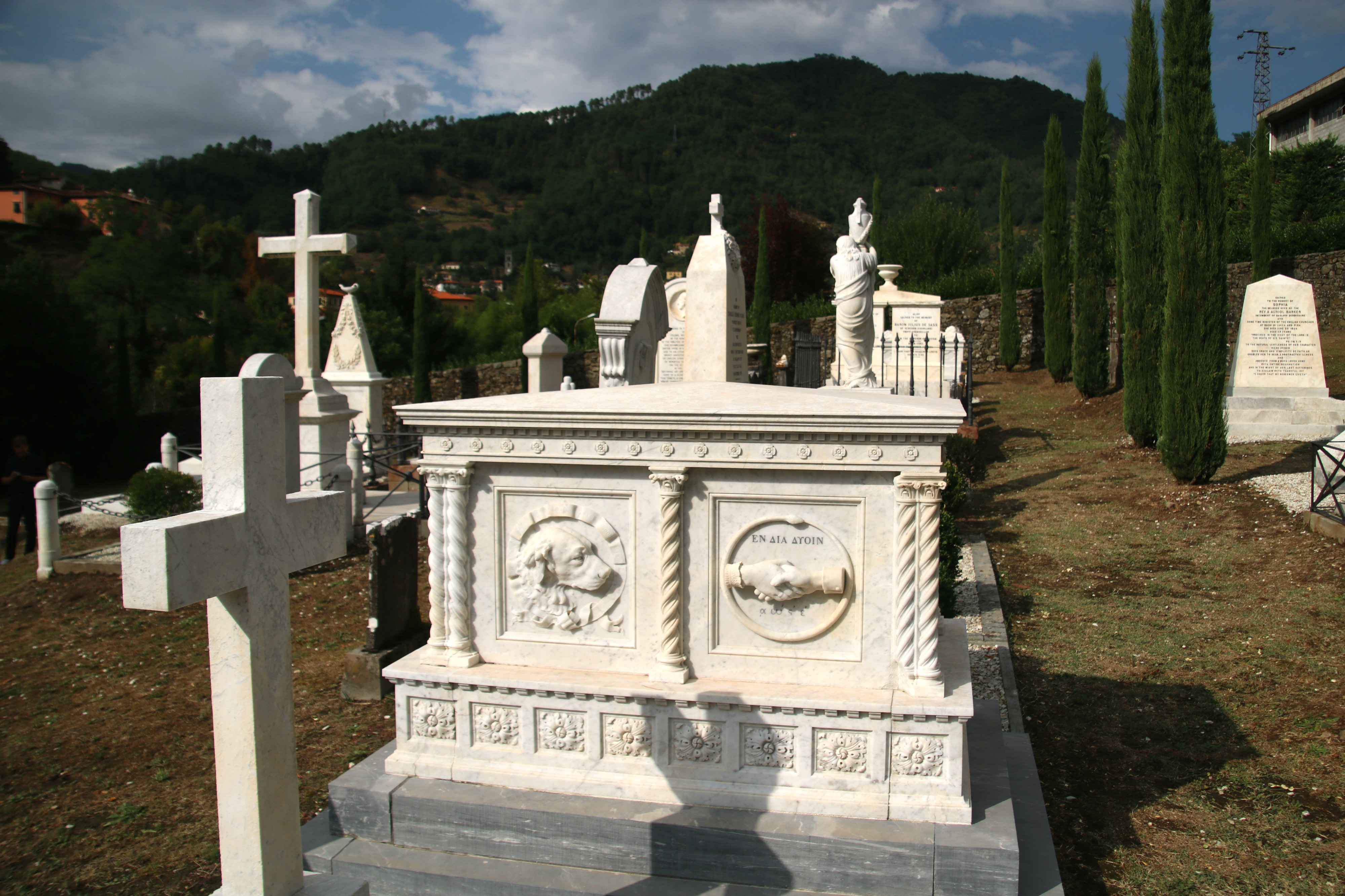
Mongolo1984, CC BY-SA 4.0 <https://creativecommons.org/licenses/by-sa/4.0>, via Wikimedia Commons
Bibliography
Cherubini, Bruno, Bagni di Lucca fra cronaca e storia, Lucca, Pacini Fazzi, 1972.
Giambastiani, Laura (a c. di), Il cimitero inglese ai Bagni di Lucca. Analisi e proposte di restauro, Firenze, Regione Toscana, 1994.
Giambastiani, Laura, “Considerazioni storiche sul cimitero anglicano ai Bagni di Lucca”, L’Aldilà. Rivista di storia della Tanatologia, IX (1-2), 2003, pp. 45-77.
Giambastiani, Laura, "Il cimitero anglicano dei Bagni di Lucca. Iscrizioni e fonti archivistiche", L’Aldilà. Rivista di storia della Tanatologia, Numero monografico, XII-XII-XIV, 2006-2007-2008.
Stisted, Elizabeth Clotilde, Letters from the Bye-Ways of Italy, London, Murray, 1845.
Tolomei, Arianna, Paesaggio e giardini di una città termale. Bagni di Lucca, Lucca, Pacini Fazzi, 2001.
Ultimo aggiornamento
13.11.2025
